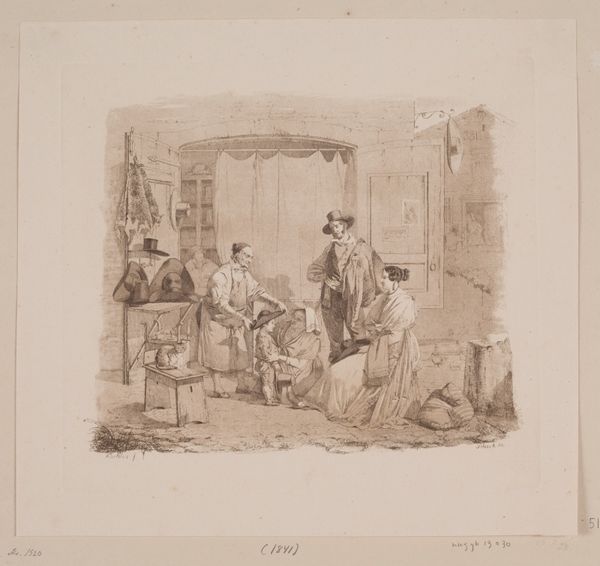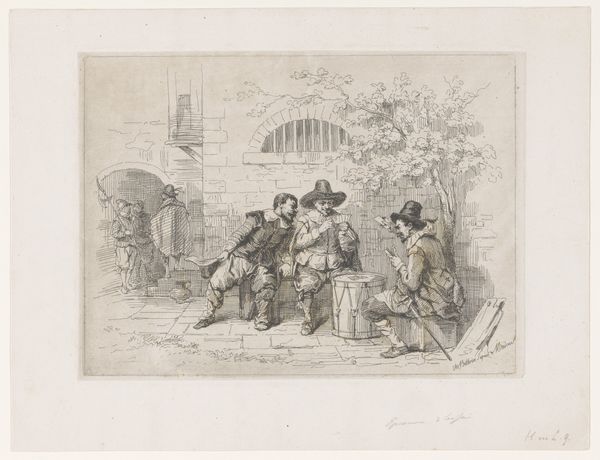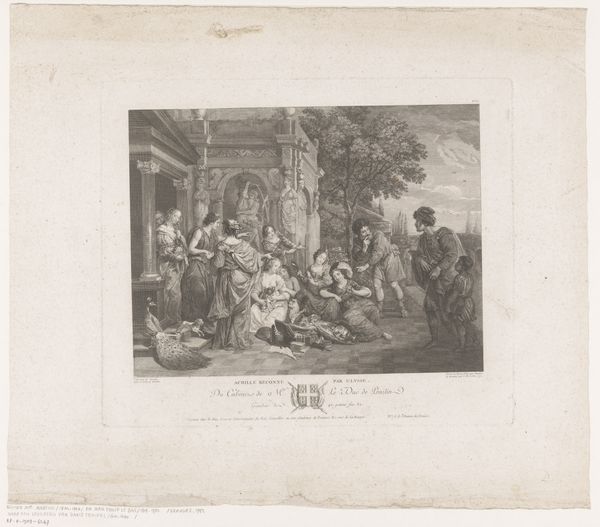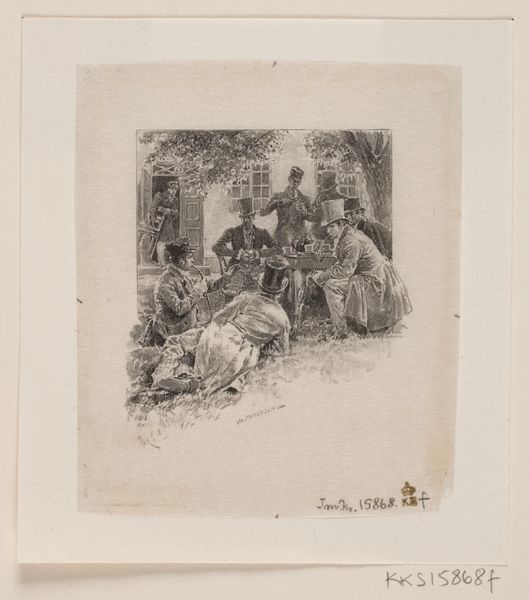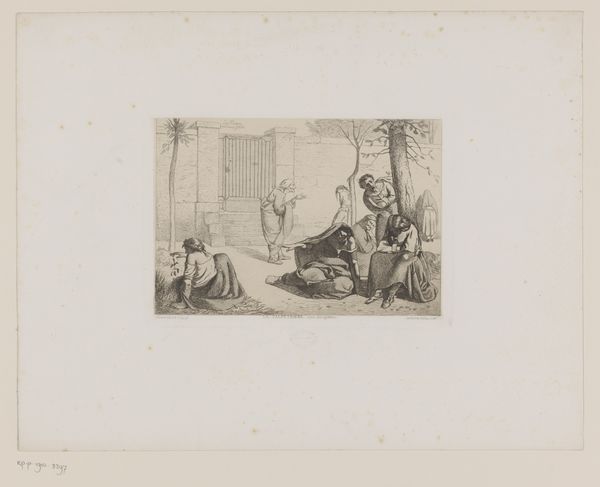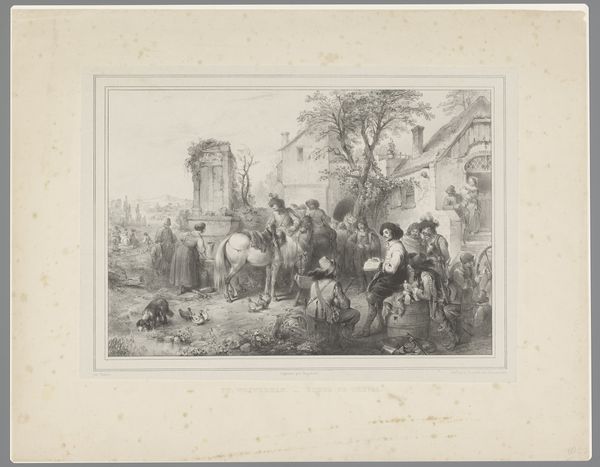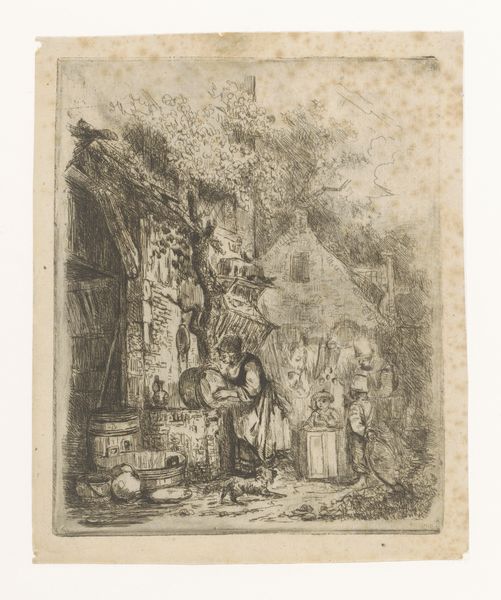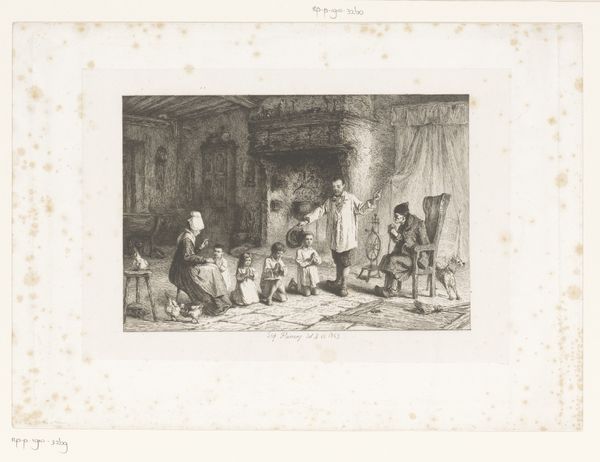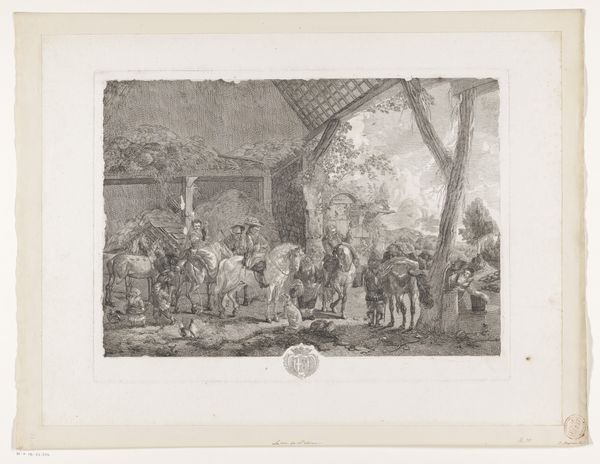
print, etching
# print
#
etching
#
landscape
#
etching
#
figuration
#
romanticism
#
genre-painting
Dimensions: height 129 mm, width 157 mm
Copyright: Rijks Museum: Open Domain
Editor: This etching, “Militair stopt om te drinken bij een dorpsherberg,” from 1836 by Paulus Lauters, portrays a genre scene, almost like a snapshot in time. What draws me in is how mundane the activity feels—a soldier pausing at a tavern. What symbolic weight do you think a scene like this might carry? Curator: The choice of such an everyday scene is exactly where its symbolic power resides. Soldiers represent structure, duty, and potential conflict, whereas a tavern symbolizes relaxation, community, and indulgence. To place a soldier here asks a profound question about the negotiation of these social spaces. It speaks to human nature and inner desires that extend across time. The landscape's Romantic style—think how the thatched roof almost merges into nature itself—hints that true respite lies beyond the formalities and expectations of the military life. What's most interesting to you about this soldier, specifically? Editor: I'm curious about what's unspoken. The soldier seems at ease, yet his uniform reminds us of his position, perhaps of a recent conflict? The fact that he stops to engage, seemingly welcomed, brings some needed humanity. Curator: Precisely! The cultural memory of conflict shapes how the symbol of a soldier is viewed. In 1836, anxieties surrounding nationhood, stability, and individual liberties would've been potent. Notice also, there is more than one soldier at the Inn; one could assume it is an Officer and his Attendant/Slave. What psychological effect might the relationship between them, and the people of the Inn elicit from the audience? The image reflects deep cultural anxieties regarding authority and identity. Editor: That makes me see the entire composition differently. Thank you! Curator: Indeed, exploring art like this helps reveal cultural layers embedded within visual representation.
Comments
No comments
Be the first to comment and join the conversation on the ultimate creative platform.
